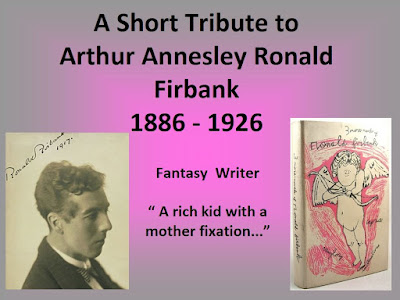AN EASTER STORY FROM WILLIAM CROSS
Riverside, California, Evan Morgan's retreat in the 1920s
Hon. Evan Morgan in the 1920s
In the late 1920s the Hon. Evan Morgan [1] ( later Viscount Tredegar) was in Riverside, California as a guest of Frank A Millar [2] the proprietor of the Mission Inn hotel.
Evan’s visit made such an impact that it features in a book published about Frank Millar and the Mission Inn:
The book declares that:-
There was the incident of the visit of the Honorable Evan Morgan, son of Baron Tredegar of England.” [3]
Several tall stories are told of how Evan acquired a piece of the ‘ True Cross’ on which Christ was crucified, including one ludicrous yarn of Evan making the find in the Holy Land ( he did visit Jerusalem at least once ). Another ridiculous romp mentions Evan hiring a whole carriage of a train passing through Turkey to convey the relic back to his home in Britain.
In fact the real story of Evan’s precious possession relates to a reliquary of St John on the Cross at Mission Inn.
“ Mr Morgan had arrived at the [ Mission] Inn on a trip around the world. Wandering among the crosses of the collection, he came upon a reliquary of St John of the Cross. Mr Morgan’s Catholic sympathies were pronounced, and St John was his patron saint; he went to the curator, saying that he wished to buy this cross. The curator told him courteously that nothing in the cross collection was for sale.
“I must buy it.” The Honourable Evan Morgan repeated. “ You must let me buy it.”
Impressed by the absence of any mention of price or inclination to bargain, Mr Borton, the curator promised to lay the matter before Mr Miller. Mr Miller replied that he was sorry, that nothing in the cross collection could be sold.
Mr Morgan now cried. “Please tell Mr Miller that I will pay anything he wishes, but I must have the cross.”
This word he followed with a personal letter to Mr Miller, repeating the wish to have the cross at any price, and enclosing three papal rings, whose settings were exquisite intaglios cut in amethyst and topaz. Sitting before an open fire in his cowled monk’s dressing gown of brown burlap, Mr Miller dictated his reply.
My DEAR FRIEND: I cannot find it in my heart to traffic in anything which you value as manifestly you this cross. Take it, with my appreciation of you.
I am returning the three papal rings, which I am sure that you value more than I would know how to do.
Sincerely yours,
FRANK A MILLER”[4]
Another teller of the same tale suggests that on Evan’s visit to Riverside he “ secured a relic of the ‘True Cross’ in exchange for a Cross which he [ Evan] procured from the Belgian battlefields and had blessed by the late Cardinal Mercier”. [5]
An Extract ( with additional text ) from the book “Evan Frederic Morgan : Final Affairs Financial and Carnal” By William Cross ISBN-13: 978-1905914241
Contact William Cross, by email
[1] Hon. Evan Frederic Morgan ( 1893-1949). The last Viscount Tredegar of Tredegar Park, Newport, South Wales, UK
[2] Frank A Miller( 1858-1935) . Owner and developer of Mission Inn Hotel
[3] Gale, Zona. ‘Frank Miller of Mission Inn.’ D Appleton-Century company. (1938).
[4] Ibid.
[5] Advocate ( Melbourne), Vic. National Library of Australia. 18 August 1927. NB Désiré-Félicien-François-Joseph Mercier (21 November 1851 – 23 January 1926) was a Belgian Cardinal of theRoman Catholic Church. He served as Archbishop of Mechelen from 1906 until his death, and was elevated to thecardinalate in 1907. Mercier is noted for his staunch resistance to the German occupation of 1914–1918.











